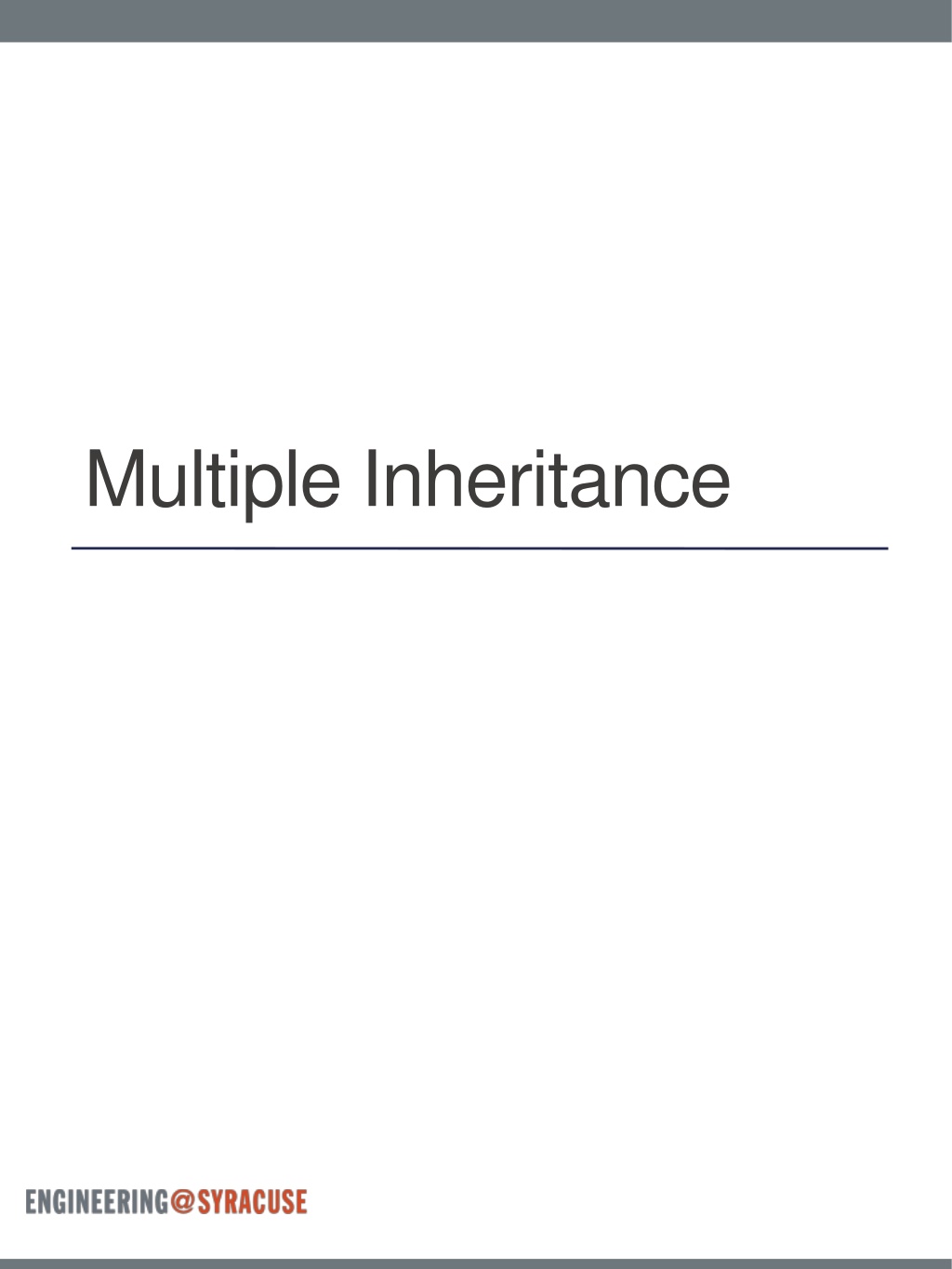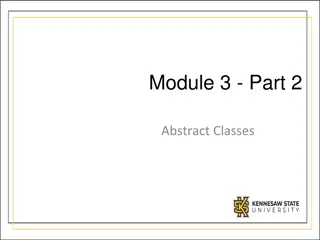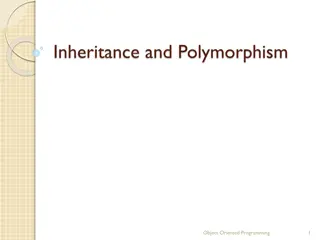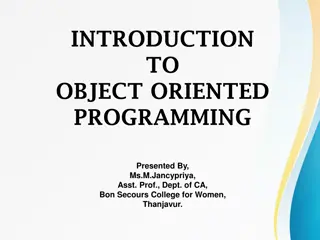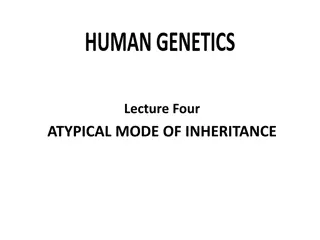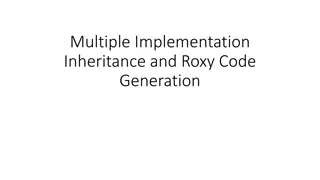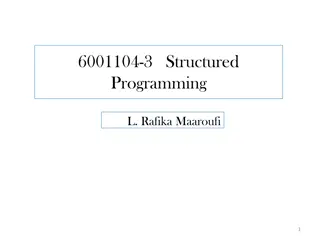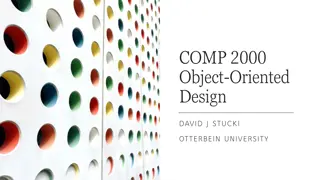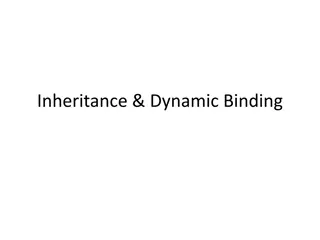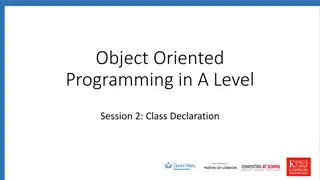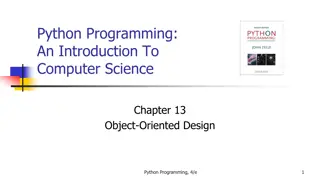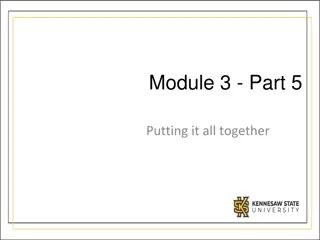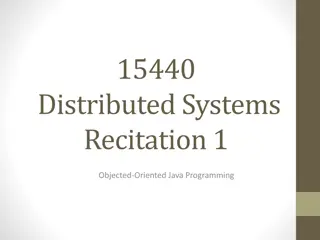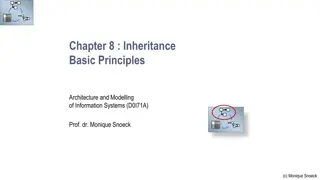Understanding Multiple Inheritance in Object-Oriented Programming
Multiple inheritance in object-oriented programming allows a derived class to inherit from more than one base class, creating a unified derived class. This design structure is suitable when the base classes are orthogonal and have no common attributes or behaviors. The derived class logically combines the characteristics of its base classes. The concept is illustrated with examples from the iostream module and discusses potential issues like ambiguity resolution and constructor initialization. Additionally, mixins in multiple inheritance can help achieve diverse objectives by combining different functionalities into a single class.
Download Presentation

Please find below an Image/Link to download the presentation.
The content on the website is provided AS IS for your information and personal use only. It may not be sold, licensed, or shared on other websites without obtaining consent from the author. Download presentation by click this link. If you encounter any issues during the download, it is possible that the publisher has removed the file from their server.
E N D
Presentation Transcript
Multiple Inheritance A derived class may have more than one base class. In this case we say that the design structure uses multiple inheritance. base class 1 base class 2 derived class The derived is-a base 1 and is-a base 2. Multiple inheritance is appropriate when the two base classes are orthogonal; e.g., have no common attributes or behaviors, and the derived class is logically the union of the two base classes. The next page shows an example of multiple inheritance taken from the iostream module. The class iostream uses multiple inheritance to help provide its behaviors.
iostream Hierarchy ios streambuf Stream Library Class Relationships filebuf strstreambuf stdiobuf istream ostream istream_with_assign istrstream ifstream iostream ofstream ostrstream ostream_with_assign fstream strstream stdiostream
Multiple Inheritance (cont.) A derived class D may inherit from more than one base class: class D : public A, public B, ... { ... }; A, B, ... is not an ordered list. It is a set. The class D represents the union of the members of classes A, B, and C. If a member mf() of A has the same signature as a member of B, then there is an ambiguity which the compiler will not resolve. Sending an mf() message to a derived object will result in compile time failure unless it is explicitly made unambiguous: d.A::mf(); A constructor for D will automatically call constructors for base objects, in the order cited in D s declaration.
Multiple Inheritance (cont.) D s constructor may explicitly initialize data members of each of the base classes by naming parameterized base constructors in an initialization list: D(Ta a, Tb b, Tc C) : A(a), B(b), C(c) {...}
Multiple Inheritance Mixins Suppose that we wish to design a string class with two specific types of applications in mind. Most applications require minimal character space for each string. If we assign a short string to an existing long string, the assignment operator would return left hand s character space and allocate a new, smaller space. For tokenizing, it is critically important that string operations like assignment and copying be as fast as possible. In this case we might decide to reallocate space only if new string length exceeded existing allocation. If smaller, simply use front part of existing space. This may eliminate many calls to a slow memory manager.
Multiple Inheritance Mixins (cont.) We can accomplish these opposing objectives using multiple inheritance in a mixin strategy. allocator smallAllocator fastAllocator We derive a string class from a base string representation class and one of the allocators. The chosen allocator replaces pointer to string s character space. class str : public str_rep, private fastAlloc { ... }; Here we mixin the string representation and allocation capabilities using multiple inheritance.
Dreaded Diamonds Suppose we have the situation: class B : public A { ... }; class C : public A { ... }; class D : public B, public C { ... }; A B C D Since D contains the attributes of all its base classes, all of the attributes of A are repeated twice in D.
Dreaded Diamonds (cont.) Suppose we have the situation: class B : public A { ... }; class C : public A { ... }; class D : public B, public C { ... }; A A B C D Since D contains the attributes of all its base classes, all of the attributes of A are repeated twice in D.
Construction Sequence Base class constructors are called implicitly by derived class constructors. The B and C constructors are called by D s constructor. Who calls A s constructor? A A B C D B will call its A constructor. C will call its A constructor.
Virtual Base Classes We can avoid duplication of A s members by making it a virtual base class: class B : virtual public A { ... }; class C : virtual public A { ... }; class D : public B, public C { ... }; A B C D Now an object of the D class contains only one set of base class A s attributes.
Construction Sequence (cont.) Who calls A s constructor? The constructor for B? The constructor for C? C++ resolves the ambiguity by requiring the most derived class to invoke a virtual base class s constructor. So, D s constructor will construct B and C and A. Note that that sequence is different than for any derivation chain with non-virtual base.
Initializing Virtual Base Classes A constructor of a derived class may explicitly initialize its base(s) with the syntax: B(Ta a) : A(a) { ... } A virtual base class must be initialized by the most derived constructor, so, for example: class B : virtual public A { ... }; class C : virtual public A { ... }; class D : public B, public C { ... }; A will be initialized by: D(Ta a, Tb b, Tc c) : A(a), B(b), C(c) { ... } If A were not virtual, B s copy would be initialized by B, and C s copy would be initialized by C. Note that changing a base class from non- virtual to virtual can break correct code.
